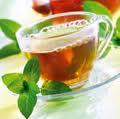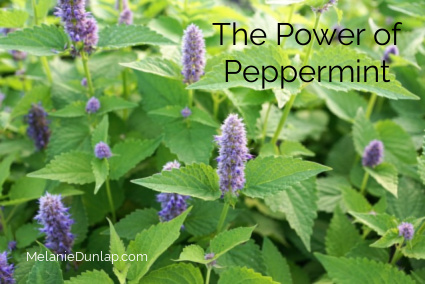Nobody warned me about Peppermint!
When I first started to learn about herbs, peppermint (Mentha piperita) was always part of the curriculum. It is safe, effective and easy to use.
Now that I am a master herbalist I teach all my students about the power of peppermint. It has become a mainstream herb that most people recognize and tea bags are now readily available on the shelf of your neighborhood grocery store.
But I always give the warning.
Peppermint has been an important plant for much of recorded history. The Pharisees paid their tithes with peppermint, Romans crowned themselves with wreaths made of it and the Greeks used it in their temple rites.
Today we use it for teas, cooking, herbal remedies and mint juleps! Few herbs are as versatile, delicious, safe, effective, readily available and easy to grow as peppermint.
All mints are mineral rich. Peppermint offers high amounts of magnesium, phosphorus, calcium, potassium and vitamins A and C. The strong concentration of volatile oils menthol and menthone give it that refreshing taste and smell. Even cleaning products are known to use peppermint for the fresh scent.
There are more than thirty species of mint.
Most of us know peppermint, spearmint and cat mint or catnip as it is commonly called. I can name a few others, but please don’t ask me to recite all thirty. Mints all have the same characteristics…and warning.
Plants in the mint family, (Lamiaceae), are known for having an aromatic smell, paired leaves on the stem and two-lipped open-mouthed tubular flowers. The easiest and most fun way to identify a mint plant is that they have a square stem. Just pick a piece of mint and feel the stem, you’ll be able to feel that characteristic square.
Peppermint plants have stout, reddish-purple, square stems, green, finely-toothed leaves and a light violet flower plume at mid-summer. It can easily reach three feet tall.
But they didn’t tell me the rest until it was too late.
Peppermint as a healer.
Renowned as a digestive aid, peppermint is the herb of choice for relieving nausea and gas. It acts as an antispasmodic, meaning it helps muscles relax, helping to relieve stomach cramping and spasms. It can be used to treat colds, coughs and chest congestion.
Peppermint tea can reduce the pain and duration of a headache. Especially one caused by a digestive problem.
Added to a bathtub or a foot bath, peppermint is pain relieving and energizing. An added benefit when dealing with a cold.
Because it tastes so good, peppermint is used in conjunction with other less tasty herbs to make herbal remedies more palatable. It is also the number one flavor of toothpaste in the world.

Need a pick me up? Try peppermint tea. It will refresh, revitalize and energize you without depleting or using up energy reserves. Combine it with ginkgo, gotu kola and rosemary to help bolster memory and sharpen your thinking.
When using herbs, quality matters. Herbs should look, smell and taste like the plant did when it was growing. Your peppermint should have that vibrant, energizing smell that opens up your nasal passages and brings a slight smile to your face. Sometimes when I’m having a challenging day, I’ll open my jar of peppermint and inhale deeply. It always calms and revitalizes me.
By now you’re probably wondering why such a safe and useful herb comes with a warning. A warning that if you don’t heed you will regret it. One I wish someone had told me as a budding herbalist/gardener.
Peppermint, like all mints, are sneaky travelers that won’t stay where they are put. Because peppermint is so easy to grow, and starter plants are readily available at any nursery, it was one of the herbs I planted when I started to garden. It was our first house and my first herb garden.
Once mint gets established it will take over a garden and travel everywhere! My garden bed was four feet square, and I put in one mint plant. By the end of the growing season there was mint in every corner of that bed, and it had somehow crossed over into another bed that was three feet away!
Warning! Mint travels! I recommend you plant it in a pot by itself. Another trick I learned was to take a five-gallon bucket, cut the bottom out of it and sink it into the ground. Plant your mint inside that bucket. The roots won’t go deep enough to get outside the bottom.
Keep your different mints separated. Mints intermingle and interbreed quite readily, so if you grow more than one type, you can end up with weird mixtures that most often won’t taste or smell as nice as the parent plants. The intermingled plants also won’t be as medicinally active.
Peppermint is a staple in our house. There is always dried herb for a cup of tea and during the growing season there is a pot outside giving me fresh leaves for food and drink. If you are interested in natural ways to get and stay healthy, peppermint should be in your house too.
But don’t say I didn’t warn you.
